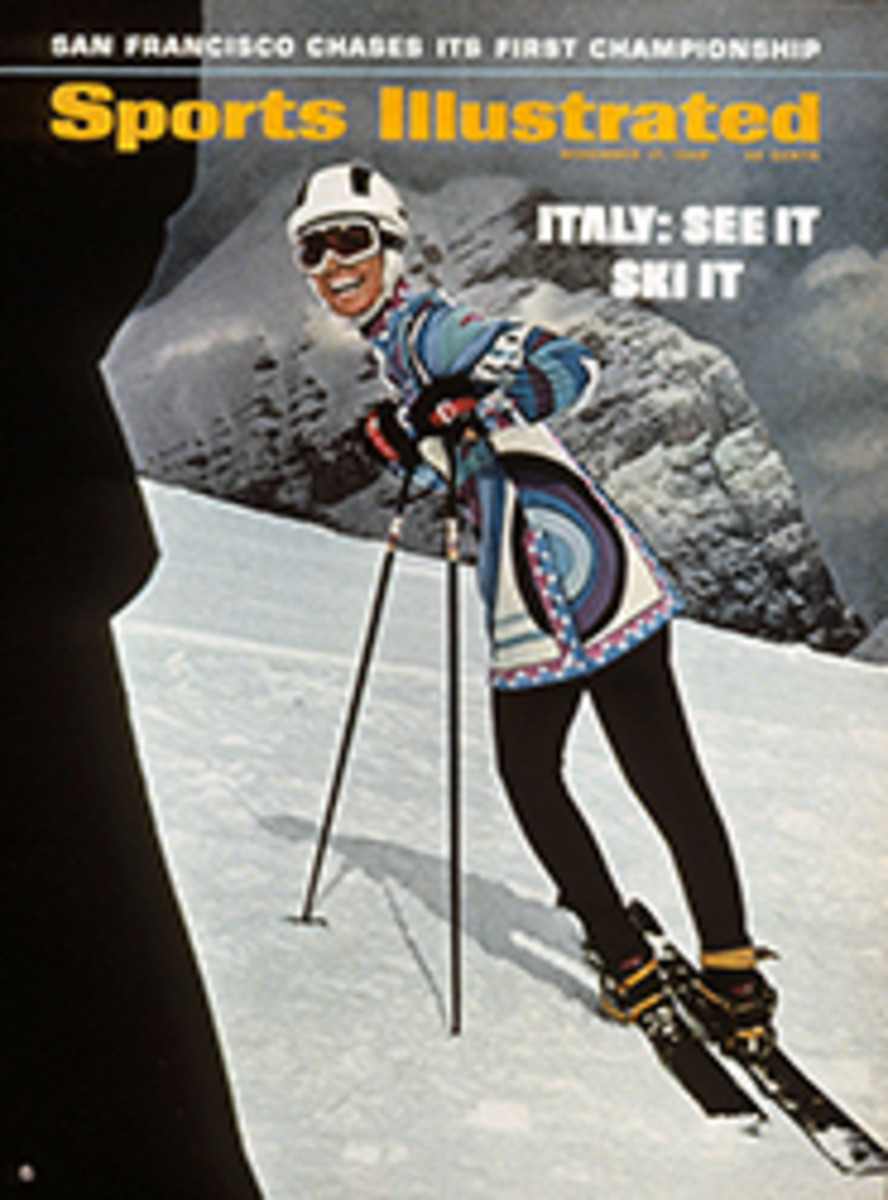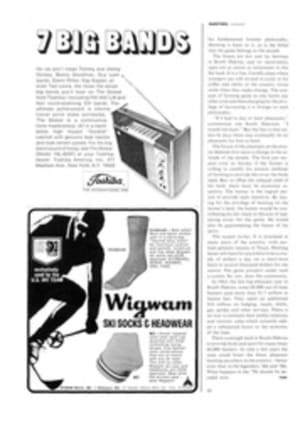
Italy: Sites to See, Places to Play
It took the ancient Romans a few centuries to figure out that the way into Val Gardena lies through a narrow, five-mile canyon that serves as a gateway. The old Ponte Gardena is still the best way in, although the going is a lot easier this century; Milan on the Italian side and Munich on the German side are the jumping-off spots. From Milan a snappy train service runs to Bolzano (a five-hour trip through spectacular scenery for $8.80), where you transfer to a bus (75¢) for the last hour's ride into Ortisei, considered the principal village in the valley. From the Munich side the train chuffs over the Brenner Pass to Bolzano in 4½ hours—an $11 trip and an unforgettable ride. Along the top of the Dolomites, Val Gardena and Cortina are 40 miles apart, roughly two hours by car or bus.
WHERE TO STAY: The latest count lists 110 hotels and pensions in the three villages. Selva's new luxury-class Hotel Aaritz will charge top rates: $20 a day per person, double room with bath—but that includes three fattening meals. More typical rates are $9.25 a day at the Hotel Interski in S. Cristina and $6.50 a day for clean, comfortable quarters—American plan—in most of the pensions. Those who want to see world ski champions in action should plan to visit the valley from Feb. 7 to 15, but reservations for any time during the season may be made through Global Ski Tours, 11753 Wilshire Blvd., Los Angeles 90025, and U.S. Ski Corporation, 21 East 40th St., New York City 10016. Since this will be Italy's big season, reserving early is suggested.
WHERE TO PLAY: Italians call it their ski circus, since the countryside is all interconnected by lifts, and skiing 30 miles a day—on slopes all around the valley—is considered routine. Val de Mesdi on the Gruppo del Sella and the Forcella del Sasso Lungo on the Sasso Lungo mountains are the toughest runs, but for the less accomplished there are more than 75 miles of color-coded trails serving expert to intermediate, plus a vast, 20-square-mile upland pasture called Alpe di Siusi for everybody. Lift tickets are sold in point books; one book costs 4,500 lire (about $7.25) and will last the average skier two or three days.
Playing by night is pretty relaxed. Since most tourists eat in their hotels or pensions, dining-out spots are limited. But after several resident meals loaded with such starchy staples as pasta and potatoes, you can escape for an evening to the Grill Room at Ortisei's Hotel Posta. It serves the most expensive meals in the valley—$3.25 per person—but the decor, like an oldtime paneled private railroad car, is worth it. The Trauber beer house on the town's main stem is more typically Val Gardenan, serving a fine, powerful local beer (with bratwurst for 15¢), plus plenty of singing and stamping of feet. The Chamin is the town's most elegant spot for dancing: a four-piece band murders all the old songs and drinks cost $1.65 each. For discoth√®quers there is the Stua Rezia, a cozy, dark cellar. In Selva one can dine out at II Tetto and everybody goes dancing in the big main hallway of the old Hotel Gran Baita—Busby Berkeley would have choreographed the scene just like that.
WHERE TO BUY: The new Pucci ski wear shown on the cover and on these pages is available in the U.S. by special order through Saks Fifth Avenue, New York, allowing four to six weeks for delivery. On the way to Val Gardena, the Pucci look may be found at his boutiques in Rome, Florence, Milan and Venice. The knee-high fur boots by Calida are sold in leading Italian ski shops. The glasses and goggles by Baruffaldi and the leather gloves by Molinari are available in both the U.S. and Italy.

